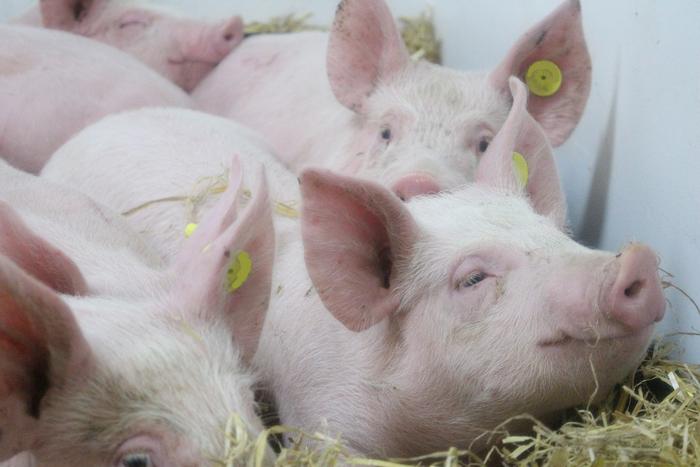The African Swine Fever Virus (ASFV), a highly contagious and devastating pathogen, has long been a formidable threat to global swine populations. Recently published research in Genome Biology and Evolution sheds new light on the dispersal history and lineage dynamics of ASFV genotype II within Europe, challenging prior assumptions about its introduction and spread across the continent. This study utilizes complete viral genomic sequences to reconstruct the virus’s evolutionary trajectory and geographic dissemination, revealing complex epidemiological patterns that have significant implications for disease control and biosecurity protocols.
ASFV is a large double-stranded DNA virus belonging to the Asfarviridae family, notorious for causing a severe hemorrhagic fever in both domestic pigs and wild boar populations. This disease continues to pose a substantial risk due to its near 100% mortality rate, lack of effective vaccines, and ability to persist in the environment and in pork products. The economic ramifications of ASFV outbreaks are profound, estimated by the Food and Agriculture Organization to have cost the global pork industry approximately $2.1 billion over the past 17 years, exacerbating vulnerabilities in agricultural markets, particularly in regions reliant on swine farming.
Historically, ASFV was confined to sub-Saharan Africa, where it circulates primarily in a sylvatic cycle involving wild suids and soft ticks. However, the emergence of genotype II outside Africa marked a turning point in the virus’s expanding geographical footprint. Since its initial incursion into Europe in 2007, this genotype has been responsible for persistent and widespread outbreaks, affecting countries across the continent and more recently extending to Asia and the Caribbean. The virus’s transcontinental movement underscores the globalized risks inherent in modern animal husbandry and trade practices.
In this innovative study, researchers focused on viral samples collected from Lithuania between 2016 and 2019, including isolates from both domestic pigs and wild boars. These samples, obtained through systematic surveillance by the Republic of Lithuania’s State Food and Veterinary Service, provided the raw data necessary for constructing complete ASFV genotype II genomes. By expanding the existing genomic dataset, the team was able to perform comprehensive phylogenetic analyses that elucidate the virus’s dispersal patterns within Europe with a higher degree of resolution.
The phylogenetic reconstructions revealed that the ASFV genotype II strains currently circulating in Europe are genetically homogeneous, sharing a singular common ancestor that emerged well before the recent episodes of spread. Contrary to prior concerns suggesting multiple introductions from Africa into Europe, the genomic evidence strongly supports a single establishment event dating back to around 2007. Importantly, no recent viral exchange between African and European ASFV populations was detected, indicating that ongoing outbreaks in Europe are driven by intra-continental transmission dynamics.
Among the European countries analyzed, Poland, Lithuania, Ukraine, and Germany were identified as critical nodes in the regional propagation network of ASFV. These findings suggest that localized spread, facilitated by animal movements, trade activities, and human-mediated transport, have contributed substantially to the virus’s expansion rather than repeated external introductions. The role of wild boar populations in maintaining and disseminating the virus further complicates containment efforts, as their mobility and interaction with domestic pig farms create persistent challenges for epidemiological control.
The research also highlights the importance of high-throughput genomic sequencing in decoding viral epidemiology. Each additional viral genome sequence provides nuanced insights into mutation rates, transmission chains, and spatial dispersal, informing targeted interventions. These advanced molecular epidemiology tools surpass traditional methods by offering precise evolutionary timelines and breaking down complex epidemic scenarios into manageable datasets for real-time decision-making.
Given the considerable economic and agricultural stakes, understanding ASFV’s dispersal patterns is paramount for framing effective biosecurity measures. The virus’s resilience in various environmental matrices and its ability to infect diverse hosts demand a multifaceted response, integrating genomic surveillance with strict movement controls and improved diagnostic capabilities. Continued international cooperation and data sharing are essential to monitor viral evolution and preempt potential shifts that might undermine current containment strategies.
Despite ongoing efforts, the absence of a widely available and efficacious ASFV vaccine remains a significant hurdle. The virus’s complex replication strategy and large genome present obstacles to vaccine development, necessitating novel approaches that incorporate genomic data to identify conserved viral targets. Investigations into viral genomics thus not only elucidate epidemiology but also provide foundational knowledge integral to crafting next-generation immunoprophylactic agents.
The study’s insights resonate beyond Europe, as the virus’s spread into Asia and the Caribbean signals the potential for further global expansion. Understanding the European experience with ASFV genotype II offers critical lessons for regions newly affected, emphasizing the necessity of early detection, rapid genomic analysis, and adaptive control policies that are responsive to evolving viral landscapes.
In conclusion, the research conducted at The Pirbright Institute exemplifies the transformative power of viral genomics in infectious disease ecology. By demonstrating that ASFV genotype II has maintained a steady presence in Europe since 2007, and that its recent surges are predominantly shaped by internal dissemination rather than new introductions, the study restructures the narrative surrounding ASFV epidemiology. This foundational knowledge empowers policymakers, veterinarians, and farmers with the intelligence required to fortify defenses against one of the most formidable challenges facing global swine health today.
For further inquiry and access to the full article, titled “Exploiting viral DNA genomes to explore the dispersal history of African swine fever genotype II lineages in Europe,” readers can visit the publication hosted by Oxford University Press.
Subject of Research: Animals
Article Title: Exploiting viral DNA genomes to explore the dispersal history of African swine fever genotype II lineages in Europe
News Publication Date: 3-Jun-2025
Web References: https://academic.oup.com/gbe/article-lookup/doi/10.1093/gbe/evaf102
Image Credits: Lauren Cresser, The Pirbright Institute/Genome Biology and Evolution
Keywords: Infectious diseases, Public health, Swine flu




